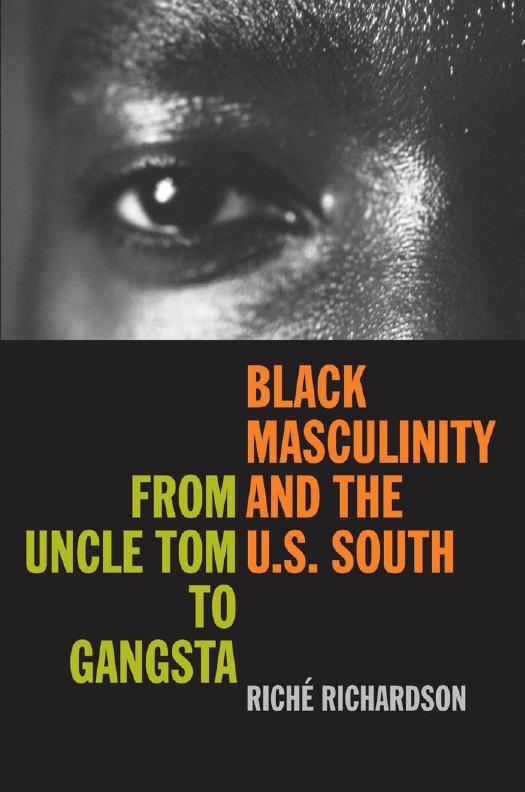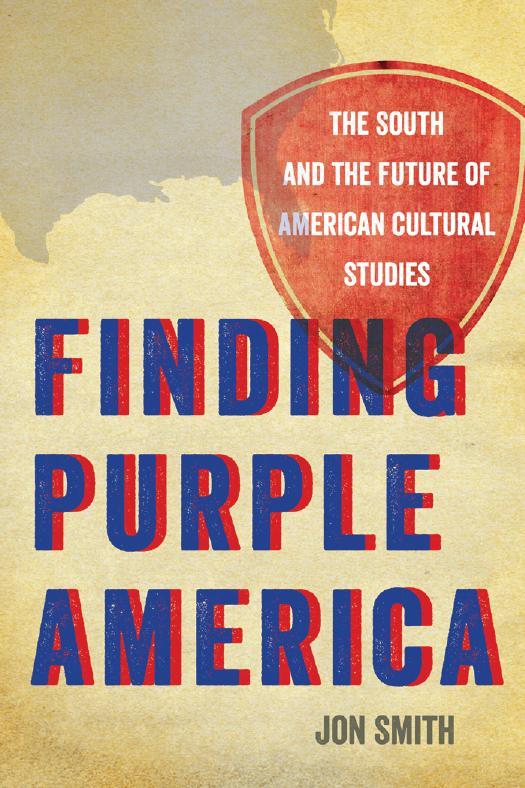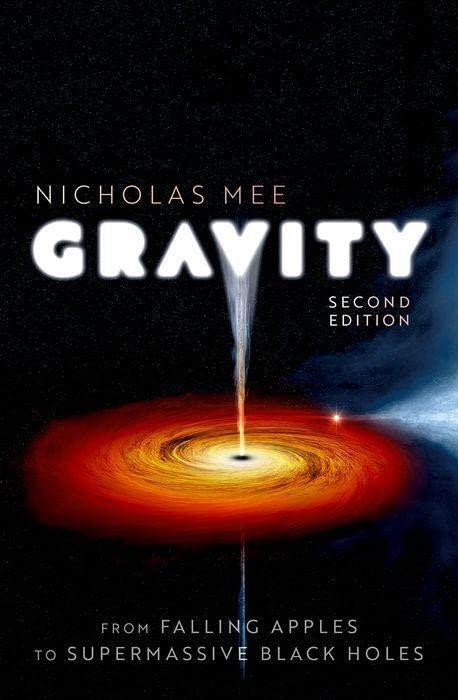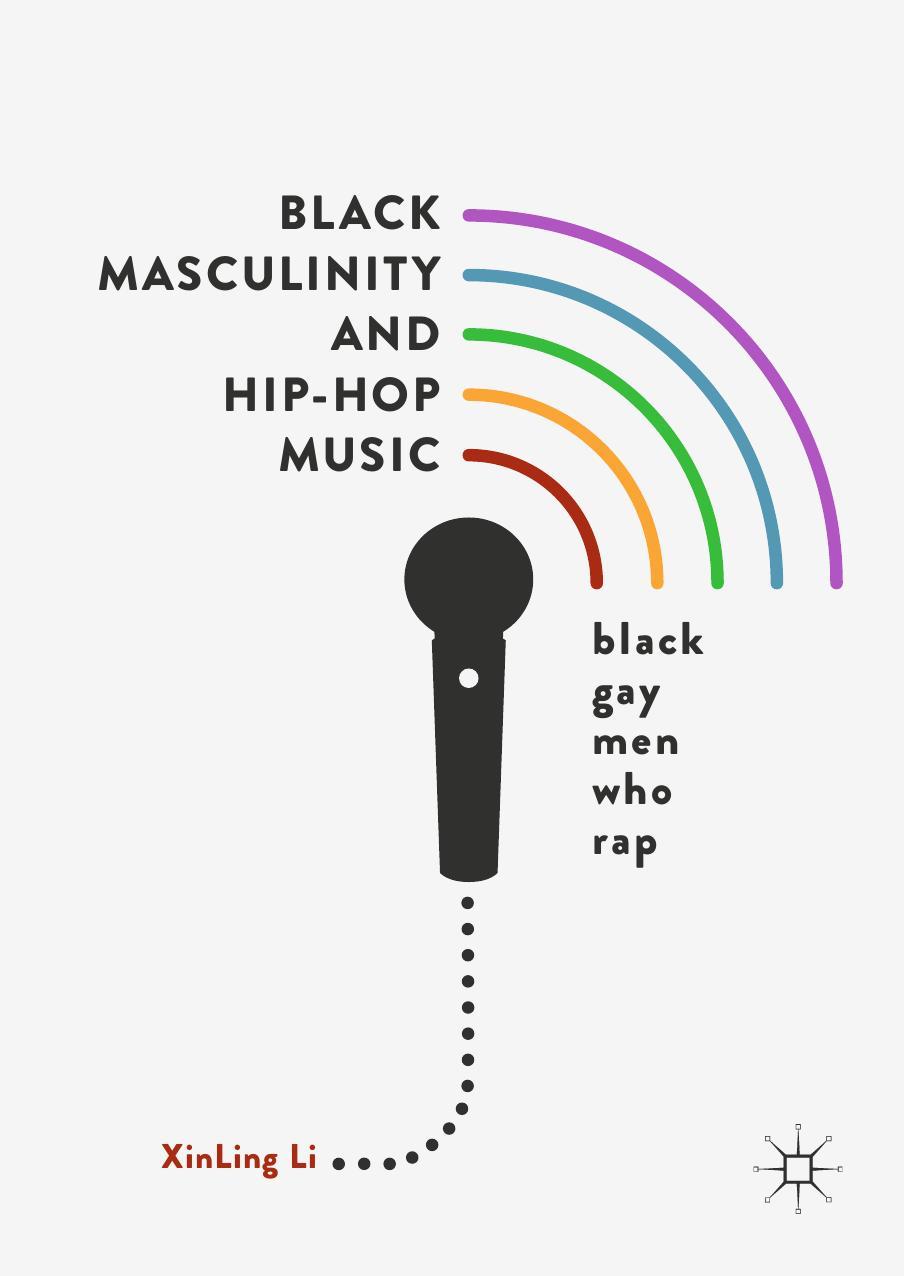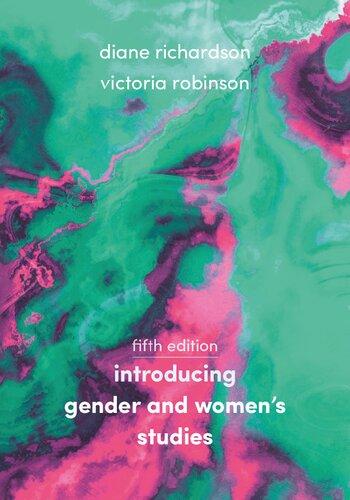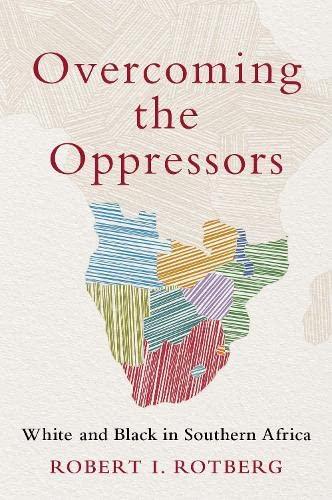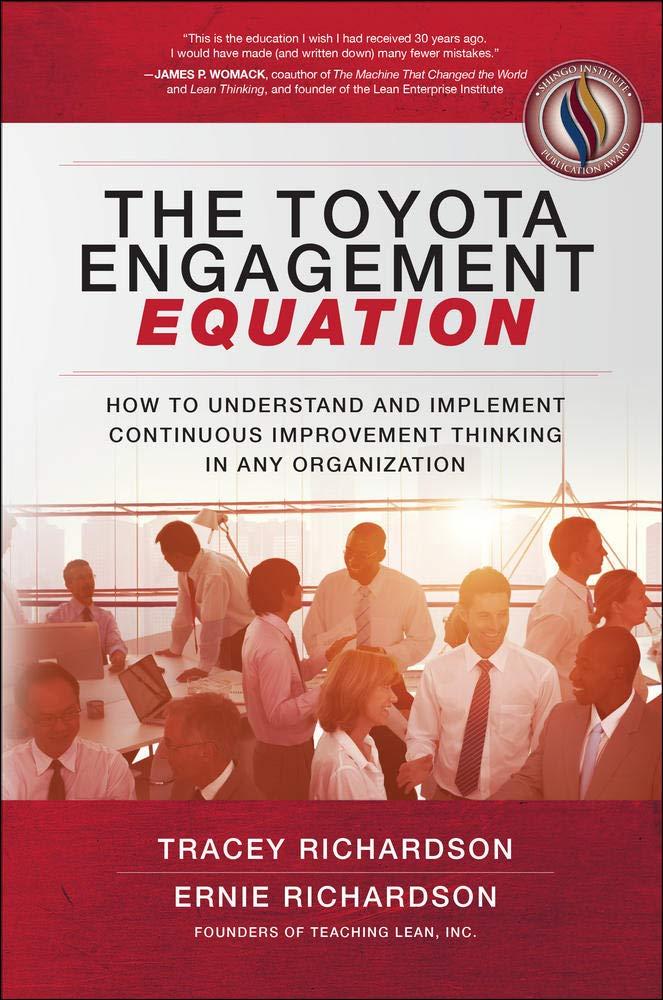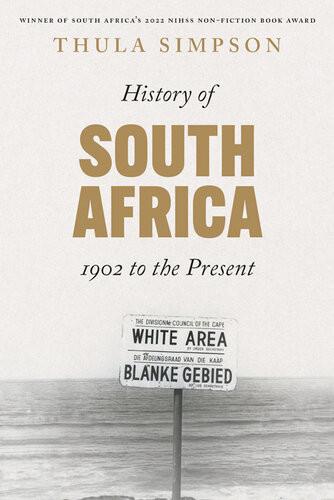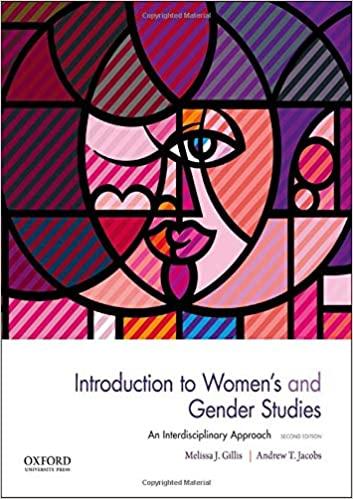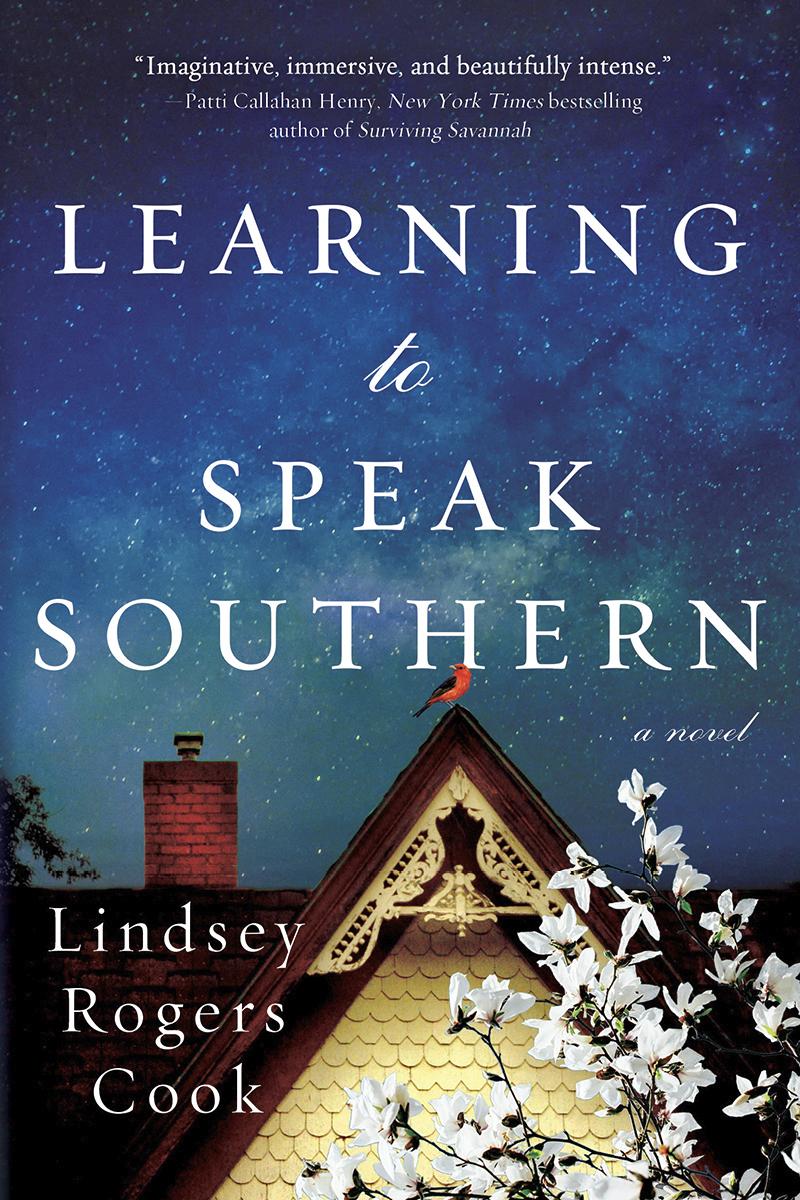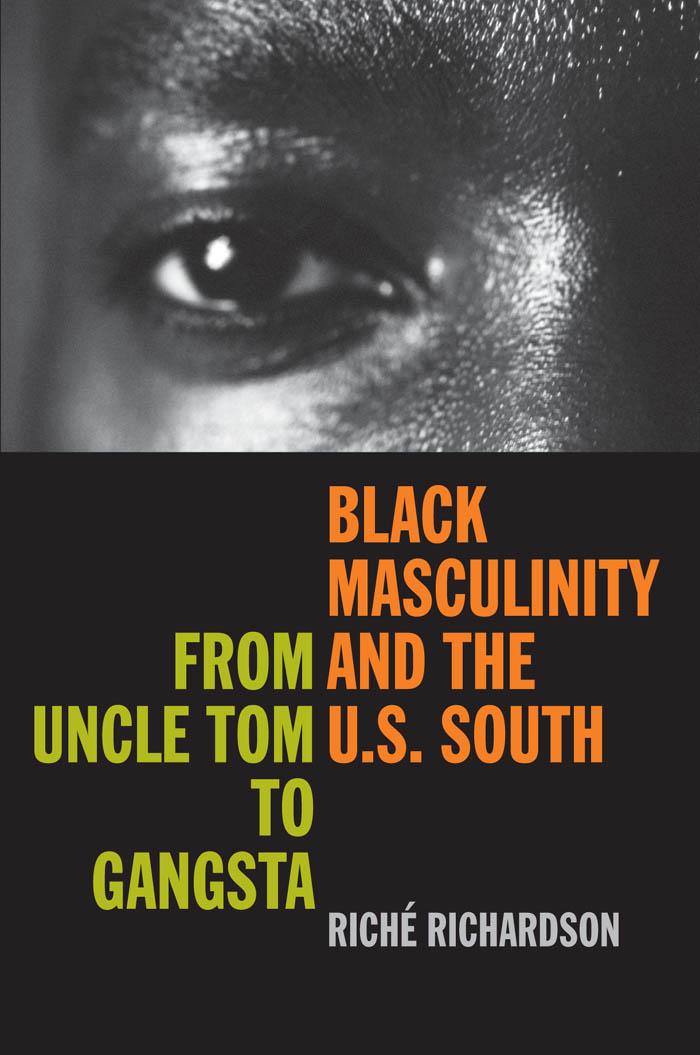Black Masculinity And the U.S. South: From Uncle Tom to Gangsta (The New Southern Studies) 2nd Edition Richardson
Visit to download the full and correct content document: https://ebookmass.com/product/black-masculinity-and-the-u-s-south-from-uncle-tom-t o-gangsta-the-new-southern-studies-2nd-edition-richardson/
More products digital (pdf, epub, mobi) instant download maybe you interests ...
Finding Purple America: The South and the Future of American Cultural Studies (The New Southern Studies Ser.) 2nd Edition Smith
https://ebookmass.com/product/finding-purple-america-the-southand-the-future-of-american-cultural-studies-the-new-southernstudies-ser-2nd-edition-smith/
Gravity: From Falling Apples to Supermassive Black Holes, 2nd Edition Nicholas Mee
https://ebookmass.com/product/gravity-from-falling-apples-tosupermassive-black-holes-2nd-edition-nicholas-mee/
Black Masculinity and Hip-Hop Music: Black Gay Men Who Rap 1st ed. 2019 Edition Li
https://ebookmass.com/product/black-masculinity-and-hip-hopmusic-black-gay-men-who-rap-1st-ed-2019-edition-li/
Introducing Gender and Women's Studies 5th Edition
Diane Richardson (Editor)
https://ebookmass.com/product/introducing-gender-and-womensstudies-5th-edition-diane-richardson-editor/
Overcoming the Oppressors: White and Black in Southern Africa 1st Edition Robert I. Rotberg
https://ebookmass.com/product/overcoming-the-oppressors-whiteand-black-in-southern-africa-1st-edition-robert-i-rotberg/
The Toyota Engagement Equation: How to Understand and Implement Continuous Improvement Thinking in Any Organization Tracey Richardson & Ernie Richardson [Richardson
https://ebookmass.com/product/the-toyota-engagement-equation-howto-understand-and-implement-continuous-improvement-thinking-inany-organization-tracey-richardson-ernie-richardson-richardson/
History of South Africa: From 1902 to the Present Thula Simpson
https://ebookmass.com/product/history-of-south-africafrom-1902-to-the-present-thula-simpson/
(eBook PDF) Introduction to Women’s and Gender Studies 2nd Edition
https://ebookmass.com/product/ebook-pdf-introduction-to-womensand-gender-studies-2nd-edition/
Learning to Speak Southern Lindsey Rogers Cook [Cook
https://ebookmass.com/product/learning-to-speak-southern-lindseyrogers-cook-cook/
blackmasculinityandtheu.s.south
SeriesEditors
JonSmith,TheUniversityofMontevallo
RichéRichardson,UniversityofCalifornia,Davis
AdvisoryBoard
HoustonA.BakerJr.,DukeUniversity
JenniferGreeson,PrincetonUniversity
TrudierHarris,TheUniversityofNorthCarolinaatChapelHill
JohnT.Matthews,BostonUniversity
TaraMcPherson,TheUniversityofSouthernCalifornia
ScottRomine,TheUniversityofNorthCarolina,Greensboro
ACKNOWLEDGMENTS
Ihavebeensupportedatvariousjuncturesofthisbook’sdevelopmentby peopleinandbeyondtheacademy.Ithasbeenaprivilegetoliveandwork inintellectualcommunityattheUniversityofCalifornia,Davis,withsuch interlocutorsasElizabethFreeman,GayatriGopinath,GregoryDobbins, JonRossini,MichaelZiser,DesiréeMartín,SeetaChaganti,ClaireWaters, KatherineSugg,andBishnupriyaGhosh,allofwhomIowethanksfortheir thoughtfulandincisivereadingsofsectionsofthisbook.Othercolleagues atUCDaviswhoseideasandsuggestionsatvariousjuncturesundoubtedly helpedtomakethisabetterbookincludePatriciaA.Turner,ClarenceE. Walker,JacobOlupona,CarlJorgensen,ClarenceMajor,DavidVanLeer, KarlZender,DavidSimpson,andLindaMorris.PeterHaysremindedme earlyontoconfronttheexampleoftheblackrapistasahistoricalstereotype ofblackmasculinityintheSouth.Thisbookhasbenefitedfromthediligent andmethodicalresearchskillsofEdenOsucha,TaraPedersen,andHana Fujimoto.IappreciateKaraThompson’scompilationoftheindex.Ihave alsofoundintellectualstimulationandsupportinongoingdialogueswith RoyKamadaandAndrewStrombeck.
IamthankfulforthesupportandadvicethatGeorgesVanDenAbbeele andRonSaufleyattheDavisHumanitiesInstitutegavesofreelyasIdrafted researchproposalsandmadeapplicationsforfellowships;theirsupportof theproject,particularlyinitsearlyphaseswhenIwasanewfacultymember, washeartening.IalsoextendthankstothemandtoJohnVanDenHeuvel andthe 2002–3 DHIfellowsforsuchastimulatingyearofdiscussionon “ThePoeticsandPoliticsofPlace.”Iamgratefulfortheopportunityto haveparticipatedinaninterdisciplinaryresearchclusteronmasculinityfor ayearatUCDavis,whichallowedmetodissectanddigestsomeofthe mostinterestingandinnovativescholarshipinthefieldwithscholarswho werealsodevelopingprojectsonthetopic.JudithNewtonwasparticularly helpfulasIdevelopedthesectionsontheblack-liberationmovement,includingtheBlackPantherPartyandhernamesake—Huey.
Forsupportofthisprojectfromitsearlyphasesasadissertationinthe fabledEnglishdepartmentatDukeUniversity,IthankKarlaFCHolloway, CathyN.Davidson,WahneemaLubiano,andThomasFerraro,whose counselhelpedmeasIsearchedoutcriticalandtheoreticalfoundations
forthisstudyandenabledmetostackthebuildingblocksmuchmoreefficientlyandcreatively.IalsoappreciateNahumChandler’sworkonmydissertationcommitteeaswellashissponsorshipduringtheyearthatIspent atJohnsHopkinsUniversityintheProgramforComparativeAmerican Cultures.Furthermore,IowethankstoMichaelMoon,LeeBaker,David BarryGaspar,andPaulaGiddings.IcannotdiscusstheDukerootsofthis projectwithoutmentioningvariousothersworkinginandbeyondthefield ofAfricanAmericanliterarystudieswhosedialoguesimpactedmydevelopmentasanintellectual.AmongthemareShireenLewis,MauriceWallace, IfeomaNwankwo,SarahWillburn,andScottTrafton.Ialsoappreciatethe supportandgenerosityofC.T.Woods-PowellandRichardPowell.
I’veyettoseeorexperienceintellectualcommunityintheprofessionanywhereelseinthewaythatIhaveexperienceditamongmycolleaguesand friendsinsouthernstudies.IparticularlyappreciatethesupportthatIhave beengivenbyJonSmith,LeighAnneDuck,ScottRomine,KathrynMcKee,AnnetteTrefzer,GeorgeHandley,DeborahCohn,KatherineHenninger,RobertPhillips,andJohnLoweasIhavecompletedthisbook. HoustonA.BakerJr.’smethodologieshavewidenedthespaceforcriticalstudyofblackmasculinityandtheU.S.South,andIhavevaluedhis support.ThefeedbackofMarlonRossandRichardYarboroughwasalso usefulandarrivedwhenIreallyneededit.IvaluedtheopportunitytoparticipateinadialoguewithHortenseSpillersaboutherrichbodyofworkin psychoanalysisduringmydevelopmentofthisstudy.
Fundingfromvarioussourcesenabledthedevelopmentandcompletion ofthisproject,includingaFordFoundationPostdoctoralFellowshipthat gavemenecessaryleavetimetowrite,aNewFacultyResearchGrant,a FacultyDevelopmentAward,aDavisHumanitiesInstituteFellowship,and aFacultyResearchGrant.Thisbookhasbeenshapedinestimablyoverthe yearsbyconversationsI’vehadinsessionsatmeetingssponsoredbythe ModernLanguageAssociation,theCollegiumforAfricanAmericanResearch,theAmericanStudiesAssociation,andtheSocietyfortheStudyof SouthernLiterature.Conferences,workshops,andlecturesatDukeUniversity;theUniversityofFlorida,Gainesville;theUniversityofAlabama, Tuscaloosa;UCDavis;Brewton-ParkerCollege;JohnsHopkinsUniversity;andtheUniversityofCalifornia,Irvine,havegivenmeopportunities torefinevariousaspectsofmyanalysis.Finally,Ihavevaluedopportunities
x Acknowledgments
todialoguewithMarthaHuie,thewidowofWilliamBradfordHuie,and haveappreciatedherencouragementandsupportofmywork.
IthankChristineWickSizemoreandAkibaSullivanHarperfortheir diligentsupportandmentorshipatSpelmanCollege.Ialsoappreciatethe intellectualgenerosityofBeverlyGuy-SheftallandGloriaWade-Gayles. StephenA.Careyplantedsomeoftheearliestfoundationsforthisproject inhispopularModernBlackMaleWriterscourseatMorehouseandin hisvisionaryscholarshiponJohnOliverKillensandsouthernmasculinity. MyfouryearsofhighschooleducationatSt.JudeEducationalInstitute— whichwas,infact,thefinalcampinggroundfortheSelmatoMontgomery marchersin 1965—andeightyearsatSt.JohntheBaptistCatholicSchool, primarilyunderthetutelageoftheSistersoftheBlessedSacrament,made atremendousandunforgottenimpactonmylifeandintellectualdevelopment.
Versionsofchapters 1, 2,and 3 haveappearedinessayforminthejournals MississippiQuarterly (MississippiStateUniversity), AmericanLiterature (DukeUniversityPress),and ForumforModernLanguageStudies (OxfordUniversityPress),respectively.Iappreciatethepermissiontoreprint theminextendedandrevisedforminthisbook.Suggestionsofanonymous readersattheUniversityofGeorgiaPresswerehelpful,andNancyGrayson hasbeenaremarkableeditor.IhaveappreciatedtheadviceandencouragementofRev.JaniceCooper.IthankTerrenceJohnson,DeniseRoss,Gvanit EfuaGodare,andPalesaMohajaneforepicfriendships,alongwithAdam Hotek.I’llalwayscherishthememoryofTanglaGiles.Finally,Emma, Joanne,andJosephRichardsonandPamela,Keri,andMeganSmith,along withGeorgeBaker,SharonFrazier,andLamarLandon,haveencouraged meandcheeredmeon.Myfamily—immediate,extended,andadopted— hasbeenthemostenablingforceinmylifeonearth.Ithankheavenfor themandforthisbook!
Acknowledgments xi
This page intentionally left blank
blackmasculinityandtheu.s.south
This page intentionally left blank
INTRODUCTION
FoundationsandFrameworks
SuttonGriggs’sfirstnovel, ImperiuminImperio:AStudyoftheNegroRace Problem (1899),grappleswiththecontradictorymodelsofleadershipoffered bytheself-servingBernardBelgradeandtheprogressiveBeltonPiedmont. Inexaminingtheirconflictingstrategiesofracialupliftandthequestion ofwhoisthebetterandtruer“raceman,”thenovelalsopointstodistinctionsandhierarchiesthatexistamongAfricanAmericansonthebasisof geographythroughacuriousmansimplyreferredtoas“theMississippian.” Griggs’snarratorinformsusthat
TherewasastudentinStoweUniversitywhowasnotedforhisimmense heightandforthesizeandscentofhisfeet.Hisfeetperspiredfreely,summerandwinter,andthesmellwasexceedinglyoffensive.Onthisaccount, heroomedtohimself.Wheneverotherstudentscalledtoseehimhehad averyeffectivewayofgettingridofthem,whenhejudgedthattheyhad stayedlongenough.Hewouldcomplainofacornandforthwithpulloff ashoe.Ifhisroomwascrowded,thisactinvariablycausedittobeempty. Thefameofthesefeetspreadtotheteachersandyoungladies,and,infact, tothecity.AndthehugeMississippianseemedtorelishthedistinction. (69–70)
Belton,nearingtheendofhisdaysatthefictiveStoweUniversity,hasbeen namedvaledictorianandispreparingtogivethespeechofhislife,asit were.Whenpracticingbeforehisroommate,Beltonhasbecomeunusually emotional.Anticipatingthatsuchwillbethecaseattheceremony,hepurchasesanexpensivesilkhandkerchiefandplacesitinthetailpocketofhis PrinceAlbertsuitthenightbefore.Unbeknownsttohim,hisroommate, whofurtivelywitnesseshismovements,is“insanelyjealous”(69).After Beltongoestobed,theroommatestealstheMississippian’spungentsocks andplacestheminBelton’ssuitpocket.Thenextdaybeforethecheering audience,“Belton’sheadcontinuedbowedinsadness,ashespokeparting wordstohisclassmates,andliftedhissupposedhandkerchieftohiseyesto wipeawaythetearsthatwerenowcomingfreely.Thesockshadthuscome closetoBelton’snoseandhestoppedofasuddenandheldthematarm’s lengthtogazeatthatterrible,terriblescentproducer”(75).Attempting
torecapturehiscomposurebeforethelaughingaudience,heremarksthe following:“Ladiesandgentlemen,thesesocksarefromMississippi.Iam fromVirginia.”HumorisGriggs’sprimarydevicefortreatingtheMississippian’sabsurdity.Thesockincidentundercutstheseriousnessoftonein thepassagesofthestaidbaccalaureatesermonthatopensthechapter.The chapter’stitle—“ASermon,aSock,andaFight”—emphasizestheunlikely juxtapositionofsuchdisparateandincongruentelements.Thatthenarrator referstothischaracteras“theMississippian”pointstohisnamelessnessand theubiquityofplaceindefininghim.Furthermore,thenarrator’smeticulouscareindescribingthepositioningofcharacterssuggeststheextent towhichplacemattersinthesepassages.Thatthenarratoroverviewsthe sermonwordforwordwhileomittingthecontentofBelton’svaledictory address—whichtheroommatesabotages—foreshadowsBernard’sforeclosureofhispoliticalmissionthatoccurslaterinthenovel.Significantly,a speechbyBeltonalsoprecedesthismoment.
Inthesepassages,GriggsestablishesastarkcontrastbetweenBelton’s meticulouscareofhisclothingandtheMississippian’sslovenliness.WhereasBeltonistheschool’smostdistinguishedstudentandaimstobecomea credittohisrace,theMississippianparadoxicallytakesprideinbeingdistinguishedforhisbodyodorandseeksnohigherpurpose.Hisbig,imposing bodyisaconditionforhisalienationandnamelessnessattheschooland, inkeepingwithCartesianlogic,isthediametricaloppositeoftheintelligentmindthathasearnedBeltonhonorasvaledictorian.Beltonimplies thatheisnotthesamekindofsouthernerastheMississippianandthat thismanisothertohim.ThelargerconflictbetweenBeltonandBernard easilyobscurestheMississippian’sroleasacounterpointtoBelton,whom Griggsconstruesasthemoreidealracedandgenderedsubject.Thisnovel highlightsablacksouthernmale’sbodyaspathologicalandabjectbecause itisdirty,anddescribesitsspatialalienationandroleinthesabotageofa maleherowhoisstrivingforblackracialuplift.ThesescenesinGriggs’s novel,writtenoveracenturyago,arevaluablenotonlybecausetheypoint tohierarchiesofblackidentitybutalsobecausetheyacknowledgewaysin whichsouthernnesshassometimesfunctionedasasourceofembarrassment intheAfricanAmericancontext.Suchperceptionsofblacksouthernersare bynomeansjustathingofthepast.
BlackMasculinityandtheU.S.South examinestheconstrualofblackmale southernersasinferiorandundesirablemodelsofblackmasculinitywithin
suchracialhierarchiesbasedongeography.Mymainconcerninthisstudy istheroleofgeographyinconstitutingdifferenceandothernesswithinthe categoryofAfricanAmericans,particularlyamongblackmen.TheenduringandeponymousimagesofblackmasculinitythatemergedintheSouth duringthenineteenthcentury—theUncleTomandtheblackrapist—were paradigmatic,Isuggest,inhelpingtoestablishfoundationsfortheperenniallycomplexpoliticsofblackmasculinerepresentationintheUnitedStates. TheUncleTom,asacharacterontheatricalandminstrelcircuits,epitomizedaninnocuousandneuteredmodelofblackmasculinesexualityand cametobesignifiedprimarilyinrelationtoanaged,black,masculinebody. Theimageofhimthatmostofusnowknowbestisthatofashuffling oldermanwithrecedinggrayhair.Thisformulationwasanoutgrowthof reactionarysentimentintheSouthaboutslaveryasaninstitutioninthe antebellumera.Ascriticshavepointedout,itgrosslycontradictedUncle Tom’soriginalliterarycharacterizationinHarrietBeecherStowe’s Uncle Tom’sCabin (1852)asastrong,muscularman.Moreover,theseveralyoung childreninhisfamedcabinmadehisvirilityquiteevident.WilsonJeremiah Moseshasremarked,forinstance,that“theracialsymbolismpersonified inthecharacterofUncleTomwasnotoriginallyintendedtobepejorative.” 1 Thecentralrolethatthemutuallyconstitutivereconstructionof UncleTom’sbodyandsexualityplayedinhiseventualtranslationintowhat folkloristPatriciaA.Turnerhasaptlyidentifiedasanepithethasseldom beenconsidered. 2 UncleTom,whohasbeenafigureofcontinuingfascinationinAmericanliteratureandculture,gainedhisinitialpopularsalience insuchcontextsasadvertisingandtheater,includingtheminstrelstage, andinoneofthenation’searliestfilms.Thereconstructionofhisbodyand sexualityalsoservedasthefoundationforhisnationalabstractionandlater dispersalintoarangeofrelatedtypes,fromOldBlackJoetoUncleRemus. Similarly,theefficacyofmammyasanimage,whichwasepitomizedinthe latenineteenthcenturywiththeemergenceoftheAuntJemimalogoin 1889,wasgroundedinavisualrepresentationofherblackfemininebody asplumpandamplybosomed,characterizingthistypeasasexual.Likethe UncleTom,herconstructionreliedonanessentialistconstructionofthe bodyandsexuality.
ThemythoftheblackrapistthatemergedintheSouthinthewakeof EmancipationfunctionedinsomewaysastheobverseoftheUncleTom andwasrootedinevenmoreexplicitlyperversescriptsoftheblackmas-
Introduction 3
culinebodyandsexuality.Itwasamyththatcastblackmenassexually pathological,hyperbolizedtheirphallicpower,andconstruedthemasinherentlylustfulandprimitive.Itwasrootedinthegrowingpanicabout racialintermixtureintheSouththatemergedafterslaveryended,reflected theregion’sobsessionwithprotectingwhitewomanhoodtoensurethepurityoftherace,andservedasaprimaryrationaleforlynchingintheregion. ThismythinpartdrovethemediafascinationwiththefamousScottsboro incidentin 1931,inwhichnineyoungAfricanAmericanboysinAlabama wereaccused(buteventuallyacquitted)ofrapingtwowhitewomenona train.Racedandgenderedhistoricalimagesofblackmenasrapistscontinue toinformblackmasculinerepresentationsincontemporarymediaandpopularculture,includingthemilderandmoreflatteringassociationsofblack menwithsexualexcessorknow-how.Coupledwithimagesofblackmen asviolentandcriminal,thismythologyverylikelyinformedthelogicof CharlesStuart,awhitemaninBostonwhofalselyaccusedablackmanof murderinghispregnantwifein 1989.Whilehisstatementledtoamajor manhuntinthecityforanyblackmenwhofitthedescriptionoftheattackerthathegavepolice,Stuarthimselfwaslaterfoundtobetheculprit. Morerecently,thevulnerabilityofblackmentosuchstereotyping—andthe shrewdmanipulationofthepublic’spropensitytobelieveit—waspatently manifestintheattemptofthesuspectedabductorsofAlabamateenNataleeHollowaytoimplicatethreeblackmeninherdisappearanceinAruba in 2005.Whethertheyareguiltyornot,thecontinuingefficacyofblackrapistmythologyhasmadeblackmenvulnerabletostandingaccused.
BoththeUncleTomandtheblackrapist,thisstudysuggests,linkthe SouthtosomeoftheearliestnationalideologicalscriptsofblackmasculinityintheUnitedStates.Thesehistoricalideologiesestablishedfoundationsforahermeneuticsofblackmasculinityintheregionaspathological, whichcontinuedtobeevidentinthetwentiethcenturyinsuchcontexts asthemilitary,black-liberationdiscourse,andaspectsofblackpopularculture.Furthermore,itillustrateshowconstructionsoftheblackmalebodyas pathologicalinthelatenineteenthcenturywereineffectrecastinthefirst decadesofthetwentiethcenturyinseveralcontexts.TheTuskegeeSyphilis Study,forinstance,isoneofthemostinfamousandpoignanthistoricalexamplesoftheconfluenceofscienceandmedicineinconstitutingtheblack malebodyintheSouthaspathologicalintermsofsexualityandmark-
ingitasexpendable.Ishallillustratehowthemilitarywasinstrumentalin shapingadiscourseofblackmenintheSouthasdiseasedandintellectually inferiorcombatantsduringWorldWarIandgeneratedregionallybiased policiesthathadlastingeffects.Thoughtheyhaveseldombeendiscussed, Ialsoexploretheraced,sexed,andgenderedscriptsofpathologicalblack masculinityintheSouththatemergedasabyproductofblack-liberation discourseinthe 1960s.Iaminterestedinhowsuchideologicalmodelsof blacksouthernmasculinityhavehelpedmaintainracialdivisionsandhierarchieswithinthenationalcontextandhavehelpedformulatenotionsof AfricanAmericanidentity,includingnotionsofblackauthenticity.
Myanalysisrevealshowtheseideologicalmodelshaveattimesimpacted thedevelopmentofracialdiscoursesinthenationalcontextbycounterbalancingformationsofwhitemasculinityandsexualityandobscuring raceandgenderdistinctionswithinthecategory“white.”Formulationsof blackmasculinityintheSouthaspathological—particularlythoserootedin sexuality—havealsobeeninvoked,forinstance,toveilthewhitemasculine pornographicimaginationintheSouth.Alternatively,theyhaveservedas aninstrumentfordisplacingandunsettlingnotionsofwhitepathology andformsofwhitesexualtransgression.Onemustrecognizethelevelsat whichracialformationswithinandacrossblackandwhitecategorieshave beenmutuallyconstitutive.WhitemasculinityintheSouthwashistoricallydefinedbysuchconceptsaschivalry,honor,andgentilitythatwere upheldasthemostcherishedprinciplesandvaluesinwhitesouthernsociallife. 3 Theirmostperversemanifestationswerepatentlyevidentafter theendofslaveryinsanctioninglynchingandshapingtheideologyof whitesupremacythatcastblackmenasrapistsandstressedthenecessityof defendingandprotectingthepurityandsanctityofwhitewomanhood.As DanaD.Nelsonhasargued,thefoundationalideologiesofwhitemanhood intheUnitedStateswereestablishedduringtheEnlightenment.These frameworksareindispensableforunderstandinghowideologiesofwhite masculinityintheSouthwereconsolidatedbyforcingblacksouthernersto liveundersubjectionwhileobstructingtheirclaimstocitizenshipandby nationalizingascriptoftheblackmalebodyaspathologicalandbestialin thelatenineteenthcentury. 4 Duringthistime,thisscriptcomplemented thecaricaturesoftheblackmalebodyasanUncleTom,whichalsoworked salientlyinshapinganationaldiscourseonrace,masculinity,andsexuality. Introduction 5
Takentogether,theseimages,whichemergedinthefinaldecadesofthe nineteenthcentury,mediatedrace,gender,andsexualityformationsboth withinandbeyondtheAfricanAmericancontext.
Mycriticalendeavorseemsnecessarywhenweconsiderthatbeyond thesefamiliarhistoricalimagesofblackmasculinityintheSouth,many ofthecomplexstrategiesthroughwhichtheregionhasservedasabackdropforblackmasculineconstructionintheUnitedStateshaveyettobe acknowledged.HowtheSouthcontinuedtoshapethedevelopmentofdiscoursesontheblackmasculinebodyasperverselysexualizedandpathologicalduringthetwentiethcentury,forinstance,hasseldombeenrecognized. Furthermore,mystudyuncoversaremarkablyconsistentimagingofblack masculinityintheSouthascowardly,counterrevolutionary,infantile,and emasculated.ItexaminesthemarkingofblackmenintheSouthasother toauthenticnotionsofblacknessandmasculinityandhighlightsinstances inwhichsouthernnesshasbeenconstruedasanundesirableingredient— evenasacontaminant—inblackmasculinefashioning.Iillustratehow suchperceptionsofblackmasculinityintheSouthhavebeenrelatedto class-inflectedideologiesofupliftintheAfricanAmericancontextandto urban-centereddefinitionsofblacknessandmasculinity.
ThatblackmenfromtheSoutharesometimesperceivedasinauthenticintermsofraceandgenderbecomesunderstandableinlightofPhillip BrianHarper’sobservationthat“sincethedominantviewholdsprideful self-respectastheveryessenceofhealthyAfrican-Americanidentity,it alsoconsiderssuchidentitytobefundamentallyweakenedwhenevermasculinityappearstobecompromised....Itsprimaryeffectisthatalldebatesoverandclaimsto‘authentic’African-Americanidentityarelargely animatedbyaprofoundanxietyaboutthestatusspecificallyofAfricanAmerican masculinity.” 5 Harper’sremarksalsowellsuggest why thetopic ofblackmasculinityisparticularlyusefultoisolateandemphasizefroma methodologicalstandpointwhenexaminingnotionsofracialauthenticity, asformulatedintheAfricanAmericancontext,alongwithideologiesof blackracialuplift.
Thefocusofthisbookrestsprimarily,then,onwhatmightberegarded asmoreobviouslypejorativerepresentationsofblackmenintheSouth. Thisinvestigationisimportant,Ibelieve,becausethefamiliarandrelativelyfavorableideologicalnarrativesconstruingblacksouthernmasculinitiesasromantic,genteel,traditional,morallyupright,hardy,andhard-
Introduction
workinghavetypicallyobscuredtheideologicalstrategiesofconstructing theseidentitiesasundesirablewithinandbeyondtheAfricanAmerican context.Asanexample,wemightconsiderhowthelong-standingviewof blackmenintheSouthastraditional(àlaBookerT.Washington)fedthe scriptingofSupremeCourtnomineeClarenceThomasasthegrandson ofasharecropperfromGeorgia.Perhapsmorethananything,ithelpedto authenticateThomasashardworking,loyal,andhonestduringtheSenate JudiciaryCommitteehearingsthatresultedfromlawprofessorAnitaHill’s allegationsofsexualharassmentin 1991.Thisnarrativeworkedtosimilar effectwhen,afterbeingnominatedasnationalsecurityadvisorbyPresident GeorgeW.Bush,CondoleezzaRice’slineageasthedaughterofalongtime RepublicanpreacherfromAlabamawasemphasized.Intheseinstances, southernblackmenhavebeenidentifiedaspartofthebackboneofthe AfricanAmericancommunityandaskeepersofitstime-honoredvalues. Still,thisstudyarguesthatthepoliticsofblacksouthernmalerepresentationarebynomeanssosimpleorstraightforwardandtriestothrowinto criticalrelieftheeconomyofideologiesthatsubtendsuchromanticimages. Whilescrutinizingtheseideologiesisnotthemainpurposeofthisstudy,I dobelievetheyareasproblematicasthemoreovertlyideologicalrepresentationsthatImainlyconsider.Inrecentyears,suchrepresentationsofblack masculinityintheSouthhavebeenhyperbolizedinthepublicsphereand haveservedasabasisforreactionaryagendasaimedatredirectingpolitical dialoguesintheAfricanAmericancontextandinstatingamoreconservativeAfricanAmericanleadershipinthenation’spoliticalrealm.Thisfact aloneisastrongindicatoroftheirideologicalpotency.
ThisstudystressestheindispensabilityoftheU.S.Southtocriticaldialoguesaboutblackmasculinityandaimstoclarifytheroleofgeography innationalpoliticsofblackmasculineformation.Theroleofgeographyin formulatingmasculinityisincreasinglynecessaryforthinkingaboutsuch conceptsas“blackmasculinity”and“blackmanhood”withoriginality,clarity,anddepth.Furthermore,thisworkisnecessarytothedevelopmentof amorecomplexcriticaldiscourseontheintersectionsofmasculinityand race.Theprojectreflectsmyowncriticalinvestmentinrecognizingand studyingblackmenasahistoricallydifferentiatedandvariegatedraced, gendered,andsexedsocialcategory.WhentheideologiesthatIamdescribing,suchastheUncleTomandtheblackrapist,havebeenmentioned atallincontemporaryscholarship,theyhaveusuallybeenshroudedinmore Introduction 7
generalizeddiscussionsofblackmasculinity.Theimpactofregionandof theSouthinparticularonraceandgenderformationshasseldombeenconsidered. BlackMasculinityandtheU.S.South aimstoremedytheseelisions withinandbeyondtheburgeoningcontemporaryscholarshiponmasculinity,whichprovidessomeoftheimportantcriticalandtheoreticalframeworksforthepresentstudy.Thisfieldofworkhasbeenelementalinthe developmentofgenderstudies.Ithasbecomemoreattunedoverthepast decadetotheimpactofraceinshapingmasculinitytothepointofhaving developedaveritablesubfieldofcriticalscholarshiponblackmasculinity alone.Moreover,ithasbecomelesssingularlyandnormativelyinvestedin thestudyofwhitemalesubjectivity. 6
Inmorerecentyears,someofthemostsignificantcriticaldevelopments inscholarshiponblackmasculinityhaveincreasedourunderstandingof howsexualityhelpscreatedistinctionsandhierarchiesamongblackmen. However,beyondtheexpandedconceptionsofblackmasculinityyieldedby theworkonsexuality,blackmenfrequentlycontinuetobetreatedasanundifferentiatedandmonolithicracialandgendercategory.Thedistinctions amongthembasedongeographyarerarelymentioned.Seriousquestions haveyettoberaisedabouthierarchicalformulationsofblackmasculinityrootedindistinctionsonthebasisofgeographyinpartbecauseregion hasbeenaneglectedterminponderingprimaryvariablesthatintersectin shapingidentitysuchasrace,gender,class,nationality,andsexuality. 7 My discussionofrepresentationsofblackmenintheSouthasunmanlyandexteriortonotionsofauthenticblacknessandmasculinityaccordswithcritical workinblackfeminismandcriticalracetheorythathascontestedreductive andexclusivedefinitionsofblacknessonthebasisofgenderandsexuality, whichoftentimesnarrowlyshapesantiracistdiscourse.
AsHoustonA.BakerJr.andDanaD.Nelsonhavepointedout,the Southisoftenperceivedas“America’sabjectedregionalother.” 8 Suchcriticalperspectiveshavewellsuggestedtheutilityoftheoriesofabjection withinpsychoanalysisforstudyingtheSouth.Thepsychoanalyticwork onabjection,JuliaKristeva’sinparticular,providesimportanttheoretical groundingforthisstudy.StudiesbysuchscholarsasPatriciaYaeger,Anne GoodwynJones,andSusanDonaldsonhavetheoreticallyexpandedepistemologiesoftheSouthinfeminismandgenderstudieswhileofferingperspectivesonsouthernabjectioninrelationtofemalesubjectivity. 9 Furthermore,thestatusoftheSouthasan“abject”regioninthenationhasbeen
evidentinthebodyofscholarshipthathasexaminedhowtheregionhas beenconstitutedasaprobleminthisnation’shistory.AsLarryJ.Griffin andDonH.Doylepointoutintheintroductiontotheiranthology The SouthasanAmericanProblem,
TheAmericanSouth,morethananyotherregionoftheUnitedStates,has oftenbeendefined...asbeingatoddswiththemainstreamofAmerican valuesorbehaviorandthereforehasbeenconstructedasaspecialproblem. Becausethefateofthenationwasandremainsunalterablyboundtothe fateoftheregion,however,the“problemoftheSouth”hasalwaysbeen America’sproblem,understoodmostoftenasablightonthebroaderculturalandpoliticallandscapeandsomethingthatmustbeaddressedand solved. 10
Byexaminingracial,legal,political,economic,andsocialframeworks,such scholarshiphashelpedusunderstandwhytheSouthhassofrequentlyregisteredasa“problem”intheUnitedStates,eveniftheSouthparadoxically remainspivotalinsettingcontemporarynationalpoliticalagendasthatare frequentlyreactionary. 11 ManyoftheissuesthathavemadetheSoutha stigmatizedregionintheUnitedStatesarewellknown:theadherence toslavery;thebacklashagainstReconstruction;theSupremeCourt’slegalizationofthe“SeparatebutEqual”doctrinein 1896,inauguratingan eraof“JimCrow”segregationthatwouldonlybegintobereversedwith the Brownv.BoardofEducation casein 1954;theperpetrationofwhitesupremacistideologies,racialterror,andviolence,particularlylynching; andofcourse,inmorerecenthistory,theoppositiontoblackcivilrights. WorkthatacknowledgestheviewoftheSouthasaregionalpariahinthe nationisindispensableforexaminingwaysinwhichsubjectsareconstrued aspathological,alienated,andsubordinatedwithinthecategory“white” throughclass-biasedandracialistepithetswithsouthernroots(suchas “whitetrash”).WehaveincreasinglycometounderstandhowtheSouth functionsasapariahregionintheUnitedStatesinwhichsomewhite identitiesareexcludedandviewedassociallyundesirableonthebasisof raceandclass.Howblacksouthernershaveoftentimesbeenexcludedfrom asoutherncategorytacitlymarkedas“white”(amoremetaphoricalform ofsegregation)isalsobynowwellunderstood.Buttherehavebeenfar fewercriticaleffortstorecognizehowtheprevailingideologicalviewsof theSouthasinferiorhavebeeninternalizedandmanifested within the Introduction 9
categoryofAfricanAmericansandhowsouthernidentityhasfunctioned asabasisonwhichblacksaremalignedandexcluded.
ItalmostgoeswithoutsayingthattheSouthhasfunctionedhistoricallyas asiteofambivalentandconflictedidentificationformanyAfricanAmericansinlightoftraumasassociatedwiththeregion,whichexacerbatesthe legacyoftheSouthaspolitically,economically,andsociallyrepressive.One goalofthisstudyistodemonstratewaysinwhichthehistoryoftheSouth asa“problem”intheUnitedStateshasinflectedideologicalscriptsofblack southerners.ThecriticalworkofLeighAnneDuck,whichclarifiesinstunningdetailhowtheSouthfunctionsideologicallyas“thenation’sregion,”is abackdropagainstwhichwemightalsounderstandthekindsofintramural conflictsaboutregionamongAfricanAmericansdescribedinmystudy.
TheSouthhasplayedanorganicroleinshapingmanyoftheprevailingideologiesofraceintheUnitedStates.Thisfactwasevident,forinstance,inD.W.Griffith’s 1915 film BirthofaNation.Still,dialogueswithin academiathathavefocusedondeconstructingtheconceptofrace,which frequentlysignifiedthiscriticalprojectwithscarequotes(i.e.,“race”),have beenvirtuallysilentabouttheSouth.Thiscriticalelisioniscuriousinlight oftheincreasinglycentralrolethattheregioncametoplayfollowingthe latenineteenthcenturyinconstitutingthenation’sdiscoursesofrace.The Southisoneofthemostfecundandhistoricallyappropriatesitesonwhich toexaminetheintersectionofrace,gender,andsexuality.Thattheroleof theSouthinshapingblackmasculinityhasheretofore not beenthesubject ofmorewidespreadcriticalconcern—especiallywithincriticalscholarship onblackmasculinity—isabitironic,too,inlightofthestatusoftheSouth asakeysiteinshapingsomeofthemostdominantandinfluentialconceptionsofmasculinityandfemininityinthenation’shistory.Forinstance, ideologiesofwhitefemaleandmaleidentitythatemergedduringthenineteenthcenturyinrelationtowhiteelites,suchasthe“southernbelle”and the“southerngentleman,”haveshapedthebroadernationalgrammarbook onfemininityandmasculinity.TheyhavecomplementedtheSouth’srange ofracialistideologiesofblackmenandwomenaslasciviousanddeviant.
TowardNewSouthernCriticalHorizons
ThelargerintellectualitinerarythatIhavepursuedovertheyearshasconsistentlyfocusedonthehistoricalandcontemporarystatusofblacksin theSouthinconstitutingsuchconceptsastheAfricanAmericanandthe
American.Moreover,IhavebeenhighlycommittedtostudyingthestatusoftheSouthinthedevelopmentofdiscoursesofrace.Admittedly,my backgroundasanAfricanAmericanbornandraisedintheSouthhaspartly fueledmypassiontoengageinsystematiccriticalreflectionontheregion. 12 Asanintellectual,inadditiontoteachingandstudyingAfricanAmericanliterature,Ihavemainlyworkedinthefieldsofsouthernliteratureand southernstudies,twootherareasthatinformthisstudy.However,whenI begantoestablishtheearlyfoundationsforthisprojectadecadeagoinmy dissertation,myinvestmentsinthemethodsofculturalstudies,mycritical andtheoreticalorientation,andmyinterestintextsbeyondliteratureplaced myworkclearlybeyondthepaleofconventionalstudiesofsouthernliterature.IknewbackthenthatIwastryingtodosomethingverydifferent.AsI worked,IwalkedbyfaithandoftenfeltveryaloneasIattemptedtoexamine theissuesthatweremostcriticallyinterestingtome.Itdefinitelyhelpedto beintheDukeUniversityEnglishdepartment,whichhadgainednational recognition—andeveninspiredcontroversy—foritscriticalandtheoretical innovation.ThescholarswithwhomIworkedintheprogramweretolerantofmyneedtobeexperimentalinmymethods.Theyrespectedand encouragedmyeffortstothinkoutsidethebox,sotospeak.Backthen,my approachwastodrawonwhatwasavailableinsouthernliterature,along withsouthernhistory,asIattemptedtodevelopacriticallanguagethat wouldenablemetoformulatemyresearchquestions.Sincethen,changes havecomeaboutinthefieldofsouthernliteraturethatIcouldnothave everimaginedoranticipated.Furthermore,thefaceofthelargerinterdisciplinaryandincreasinglycomparativefieldofsouthernstudieslooksvery differentfromthewaythatitlookedevenjustafewyearsagowhenIbeganthisproject.Indeed,wearenowinthemidstofwhatsomescholars workingontheSouth,mostnotablyBakerandNelson,arereferringtoas a“newsouthernstudies.” 13 EvenasIhaverecognizedtheurgencyofthese changesandhavewelcomedandtriedinsomewaystohelpshapethem,I havealsomaintainedmyearlybeliefindrawingmethodologicallyonthe best,and,forsomepurposes,theabsoluteworstofwhatmoreconventional fieldssuchassouthernliteratureandsouthernhistoryhavehadtooffer.In thisstudy,thissensibilityisparticularlyevidentwhereIdrawonwritingsin southernliteraturesuchasWilliamBradfordHuie’s 1967 novel TheKlansman incombinationwithwhathasbeenclassifiedasa“trash”filmbythat samename.
Introduction 11
Thecurrentparadigmshiftinsouthernstudiesisrichlyevident,ofcourse, incriticaleffortstoexaminetheU.S.Southinglobalperspective.Increasingly,effortshavebeenmadeinthefieldtounsettlethemyopicracialist logicthatconstruestheSouthasafundamentallywhiteregion,alongwith binaryformulationsoftheSouththatfocusonsuchoppositionsasNorthSouthorblack-white.Anacknowledgmentoftheethnicdiversityofthe region,inlightofthegrowthofAsian,Mexican,Indian,andLatinopopulationsoverthepastdecade,hasfacilitatedthemovebeyondthismyopic historicallenswhenlookingatracialdynamicsintheregion.Untilquiterecently,itseemedthatmattersconcerningtheU.S.Southwereoflittleconcerninsuchfieldsasgayandlesbianandqueerstudies,whichhavetended toprioritizetheroleofurbancontextsinshapinggayandlesbianidentities. Nowadays,however,asubstantialbodyofcriticalworkisavailablethatexaminessouthernandruralcontextswithinstudiesofsexuality.TheSouth hasalsoemergedasasalienttopicofinterestinsuchfieldsasAmerican literature,tothepointthatprominentjournalslike AmericanLiterature and AmericanLiteraryHistory havedevotedspecialissuestodialoguesontheregion.Journalsthathavebeenattheforefrontindisseminatingscholarship insouthernliterature,suchasthe MississippiQuarterly andthe Southern LiteraryJournal,arealsohelpingtorevolutionizesouthernliteratureand southernstudiesaswellasAmericanliterarystudies.
Amazingly,thecurrentsouthernturnsinacademiahaveparallelsinthe nationalmainstreamintheareaofpopularculture.Theyareperhapsmost visiblyevidentamongrapartistsidentifyingthemselveswiththe“dirty South”andproclaimingthemselvestobe“representin’theSouth.”The genreofsouthernrapstandsatthevanguardofcontemporaryhip-hop.In fact,theSouth,forbetterandforworse,hasemergedasanepicenterforrap productioninthisnation.Southernrap’semergencehasineffectcollapsed thebicoastallogicthatlongalienatedandexcludedtheSouthasasceneof rapproduction.Thestudyofthisphenomenonalsoreflectsmyinterestin helpingtoexpandthearchiveofconceivabletextualobjectsinthefieldsof southernliteratureandsouthernstudies.
Notwithstandingtheexpansioninsouthernscholarshipinrecentyears, therehavesometimesbeenchallenges—andforsome,evenrisks—in representin’ theSouthinscholarship.Thiswasparticularlythecaseintheera beforedoingsobecame kinda —ifnotentirely—cool; Imean“cool”herein thesensethatthesingerBarbaraMandrellmeansitinthe 1981 song“IWas
Introduction
CountryWhenCountryWasn’tCool.”Inotherwords,thehistoricalstatusoftheSouthasan“abject”regionalsoimpactssomewhattheextentto whichtheregionisviewedinacademiaasalegitimateobjectofstudy.The regionhasthereforeremainedexcludedormarginalasatopicofdiscussion inscholarlydialoguesattimes.Theseresistancesarenecessaryandeven urgenttoreckonwithinorderfortheSouthtobecomealessperipheral epistemologyincontemporaryscholarship.Infact,thehistoricalsalience oftheSouthinshapingthenation’sdiscoursesofrace,gender,andsexuality shouldmakesuchelisionsinscholarlydialoguesunthinkable.
BlackStudies/SouthernStudies
Thisprojectbringstogetherarangeoftextsinliteratureandculture.Its considerationofliterature,films,speeches,andrapdepartsfromconventionalapproachesinsouthernliteratureandsouthernstudiesandsignalsits cultural-studiesorientation.Tobesure,culturalstudiesmethodologiesthat emphasizethedeconstructionoftheclassic“high”and“low”binaryseem appropriateforbringingsuchaperenniallyabjectregionastheU.S.South intoboldercriticalrelief.MaeGwendolynHenderson’sessay“‘Whereby theWayIsThisTrainGoing?’:ACaseforBlack(Cultural)Studies,”which emphasizestheimportanceofbuildinguponconventionalapproachesto blackstudiesindevelopingablackculturalstudies,is,infact,oneofthe criticalworksinculturalstudiesthathashelpedtoestablishfoundations forthepresentstudy.Hendersonremindsusoftheutilityinlookingfrom Birmingham,England,toBirmingham,Alabama,inattemptingtobuilda viableblackculturalstudiesinthecontemporaryera.Thisinclusivestrategy, shenotes,permitsanacknowledgmentoftheplaceofmoreconventional fieldssuchasblackstudieswithinthegenealogyofthisnewerfield,which hasseldomrecognizedoracknowledgedtheseearlyfoundations. 14 Myown feeling—thata“newsouthernstudies”caninsomeinstancesbeenriched bybuildinguponmoreconventionalaspectsofsouthernstudies—parallels heroutlookatthislevel. 15
AsascholarworkingprimarilyinAfricanAmericanliteratureandsouthernstudies,mymaincriticalcommitmenthasbeentothedevelopmentof methodologiesforcombiningsouthernstudiesandblackstudies.Oneaspectofmyworkhasexaminedhowblacknessfunctionsasasalientframeworkforprocessingculturalflowsandmediatingarangeofethnicandracial formationsinglobalcontexts,evenasblackbodiesremaininvisibleand Introduction 13
abjectintheglobalandnationalarena. 16 Thisphenomenonisstrikingly reminiscentofthesouthernparadoxintheUnitedStates.Themediative roleofahistoricallyabjectandmarginalblacknessintheglobalarenaisusefulfortheorizingwaysinwhichtheSouthintheUnitedStates,inlightof itshistoricalnationalabjection,isneverthelessserviceableasaparadigmfor processingculturalformationswithinaglobalcontext.Thisinsightcanhelp pushusclosertoamoreorganicandcomparativedialoguebetweensuch fieldsasblackstudiesandsouthernstudies.Ingeneral,theworkofarange ofAfricanAmericanistscholarswhoseworkhasaddressedtheSouth— includingTrudierHarris,HenryLouisGatesJr.,ThadiousDavis,Robin D.G.Kelley,DolanHubbard,TeraHunter,WilliamL.Andrews,Farah JasmineGriffin,JohnHopeFranklin,NellIrwinPainter,bellhooks,Jerry Ward,WilliamJ.Maxwell,andJohnLowe—hashelpedmyintellectual developmentinthefieldofsouthernstudiesovertheyears,alongwiththe workofsuchnewerscholarsasJudithJacksonFossett,SharonHolland, MarlaFrederick,JacquelineFrancis,NicoleWaligora-Davis,andHasan Jeffries. 17
InlightoftheissuesrelatedtotheSouth’slongstandingabjectionandthe politicsofblacksoutherndevaluationwithintheAfricanAmericancontext thatIhaveoutlinedthusfar,itmaybetruethattopicsrelatedtoblacksouthernersareeven more vulnerabletobeingexcludedandoverlookedinscholarship.TheissuesthatIhavebeendescribingconcerningblackmasculinity intheSouthhavelargelybeenneglectedinblackstudies,afieldinwhich fewifanyquestionsareeverraisedabouturban-centeredparadigmsfor definingblacknessandmasculinity.Theseparadigmshaveconsolidatedall themoreinrecentyearsgiventhefascinationwithsuchtopicsaship-hop. Alongsideitsemphasisontheimportanceofrecognizingamoreexpansive andcomplexspectrumofblackmasculineformations,thisstudystressesthe importanceofunsettlingtheseurbanfetishisms.Forlikesouthernromanticisms,weneedtounderstandhowtheyreinforceessentialistdefinitionsof blacksubjectivitywithinthediscoursesofraceintheUnitedStates.Asan exampleofthisproblematic,Iconsidertheconventionalbinarylogicabout AfricanAmericanmasculinitythatlinksinsurgencytoblackmenintheurbanNorthandaccommodationtoblackmenintheSouthinanessentialist way.Mosesrevealsthattherootsofthisideologyaretraceabletotheantebellumera,whenthenotionoftherebelslaveinthefigureofNatTurner wascontrastedwiththeUncleTomstereotype,yielding“amythofslave
Introduction
servilityandamythofslaveresistance.”Highlightingthemythologizing ofStowe’sUncleTomcharacter,Mosespointsoutthat“BlackAmericans havefoundboththeUncleTomandtheNatTurnermythsuseful.During theforty-yearperiodofrepressionfollowingtheendofreconstruction,even suchfierymilitantsasFrederickDouglassandIdaB.Wellswouldplayon theimageofthefaithful,long-suffering,honestslave.” 18 Indeed,wecan tracetheviewofblackmasculinityinurbancontexts(asmoresubversive andrevolutionary)backtohistoricalexampleslikeDouglass,whosemigrationtothecityofBaltimoreplayedanimportantroleinthedevelopment ofhisresistantsensibility.Thesamemightbesaidofthereigningmodels ofleadershipintheAfricanAmericancontextthatemergedattheturnof thecentury—BookerT.WashingtonandW.E.B.DuBois—whowere situatedintheSouthandurbanNorth,respectively.Bothmen,asleaders, werefrequentlyatoddsovertheissueofAfricanAmericancivilrights,and thelatterwastypicallyperceivedtobethemoreradicalofthetwo.
ThisstudyhighlightsthedistinctregionalcontoursoftheUncleTom myth.Geographyhassometimesplayedasalient,iftypicallyunacknowledged,roleinitscritique.ThestereotypicalUncleTomorrelatedtypes arefrequentlyrepackagedandredeemedthroughtheeruptionofalatent blackmilitancythatabruptlyanddramaticallyburstsforth.Suchrevisionistnarrativeshaveoftenimpliedthatthemostsubversiveformsofblack masculinityandmilitancyhavebeenurban,andtheyrecurredinartofthe 1960sblack-liberationera.Theyhavebeenmanifest,forinstance,inRobert Alexander’s 1991 play IAin’tYo’Uncle:TheNewJackRevisionist“UncleTom’s Cabin,” whichcombinesthemilitancyofblack-liberationdiscourseand “NewJack”and“gangsta”aestheticstorecasttheUncleTom.Thatsuch narrativesrelyonanurban-orientedaestheticstorevisethecodesthatlink thefiguretothesouthernantebellumplantationpointstoUncleTom’sgeographicaldimensionsandtotheroleofgeographyinconstructingidentity amongAfricanAmericans.The“UncleTom”nowcirculatesasageneral ideologicaldescriptorforblackmenintheUnitedStates(ithasmostfamouslybeenattachedtoSupremeCourtjusticeClarenceThomasinrecentyears).ThisstudyacknowledgeshowtheUncleTomhashelpedto producespecificnarrativesofblackmasculinityintheSouthasapolitical andcounterinsurgent.UncleTom’smarkingasasexualanddocilewithin thepopularracialimaginaryofthenineteenthcenturywasrecast,forinstance,inblack-liberationdiscourse’srepresentationsofhimashomosexual, Introduction 15
